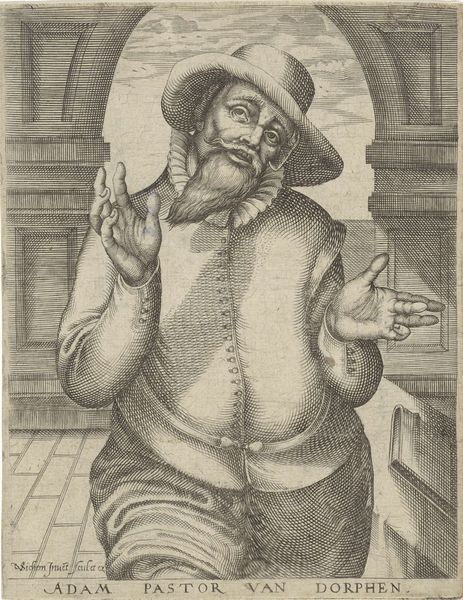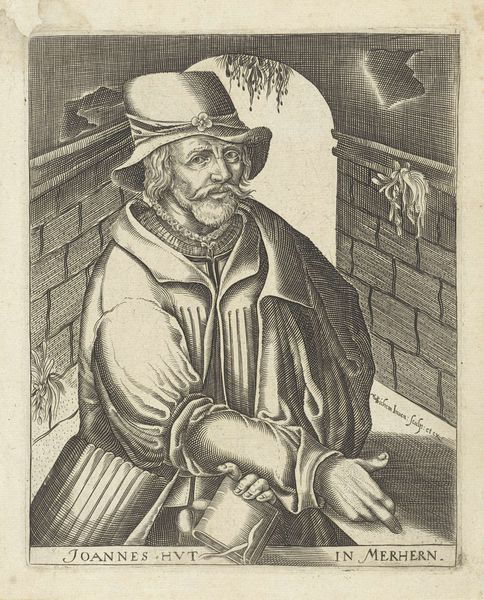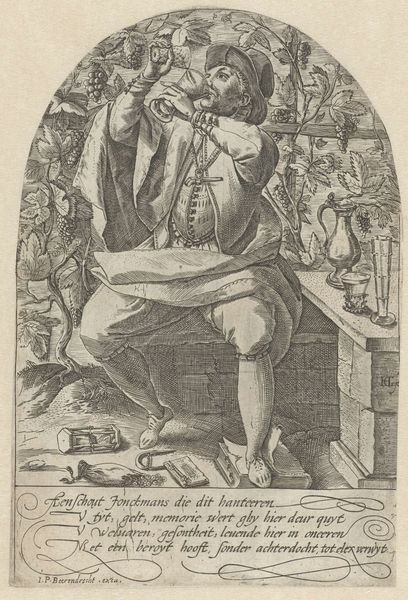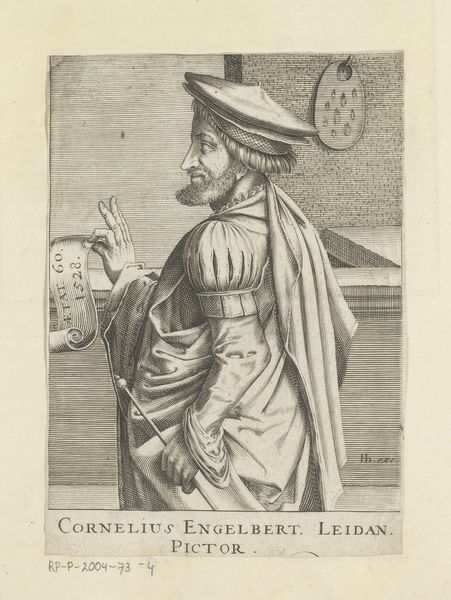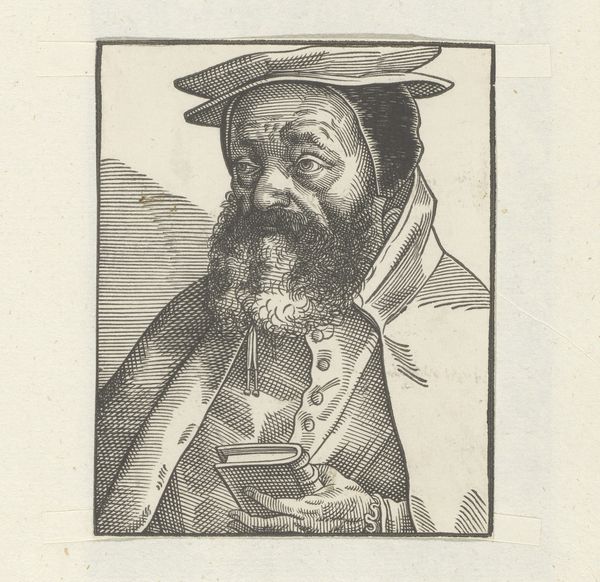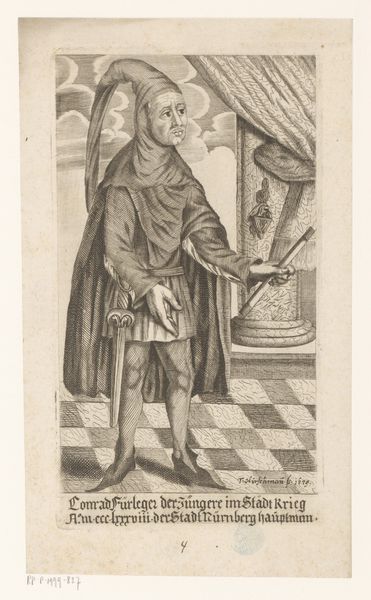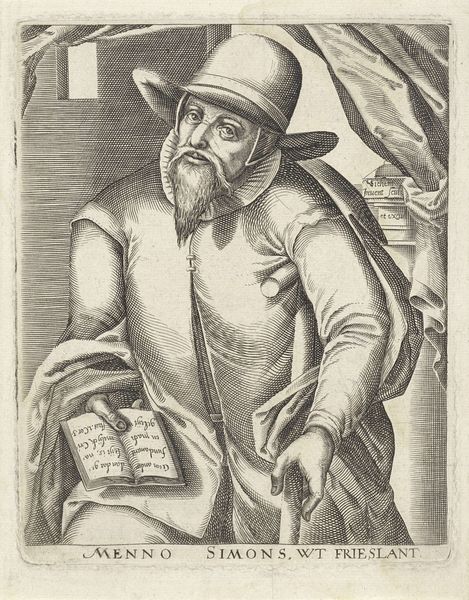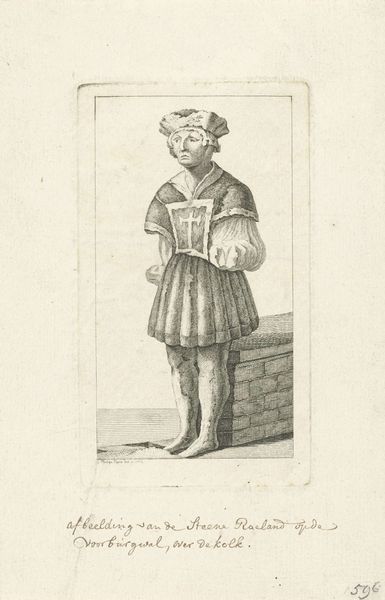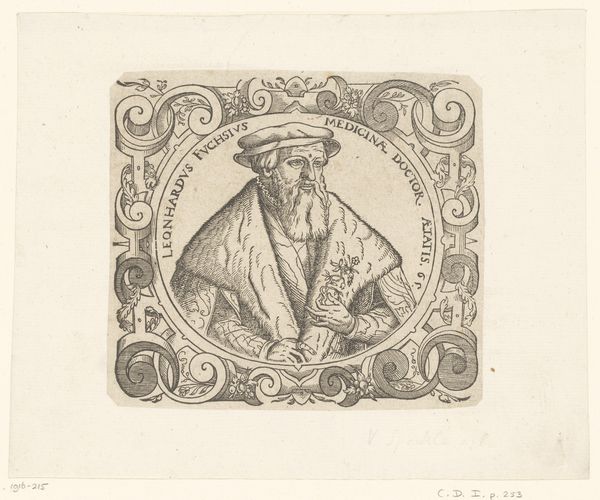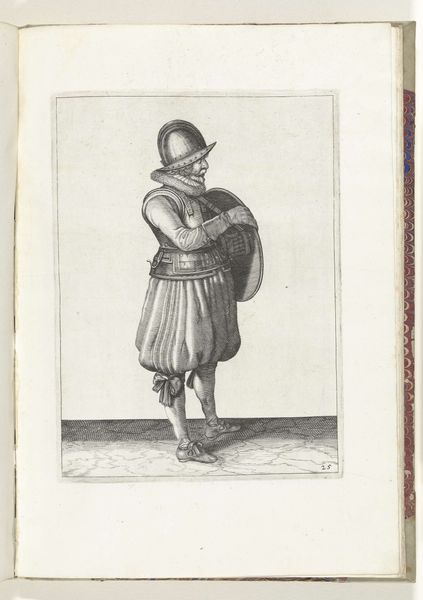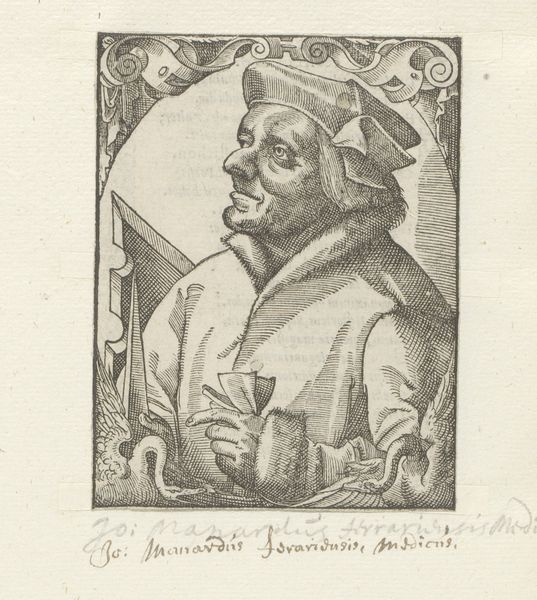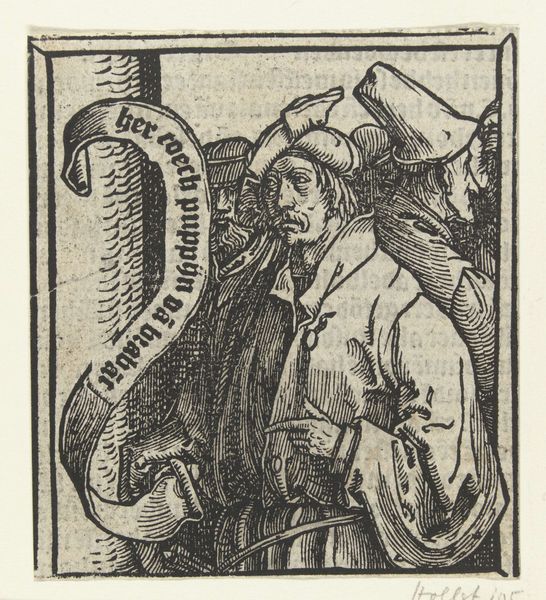
print, engraving
#
portrait
#
baroque
# print
#
figuration
#
line
#
engraving
Dimensions: height 159 mm, width 124 mm
Copyright: Rijks Museum: Open Domain
Curator: Gazing up at this intriguing portrait, I immediately sense a whimsical theatricality, don’t you? There's an almost playful lightness despite the obviously formal nature of the piece. Editor: Well, precisely that contrast is what holds my interest. This engraving, titled "Portret van Adam Pastor," crafted in 1677, likely represents Adam Pastor van Dorphen, rendered through the skilled hand of Christoffel van Sichem I. It is part of the Rijksmuseum collection, and represents a significant commentary on status through its visual style. Curator: Absolutely! The theatrical stance is wonderful, as if he’s caught mid-conversation, or maybe even in the middle of delivering a particularly engaging sermon! His gestures, with those expressively open hands, suggest so much about his character... perhaps he's caught making an appeal. Editor: That’s a perceptive read. These kinds of portraits became tools for social positioning. Here we see the subject depicted under what can be considered classic baroque principles. The social, political, and often religious turmoil gave rise to equally elaborate and often turbulent artistic production. So his pose is about far more than casual expressiveness, and his clothes depict prosperity in what was then still quite a poor part of the Netherlands. Curator: And I think you see all this drama echoed, somehow, in the details. I mean, look at those rippling lines, the light as it caresses the ruffled collar…van Sichem finds elegance in the mundane, no? The line work seems almost restless. Editor: He’s situating Adam Pastor firmly within the world of the worthy. It’s a public assertion of this figure’s social weight—engravings circulated, disseminating specific images of power, influencing and cementing societal perceptions of rank and distinction, which has repercussions and effects beyond mere artistic trends. Curator: It’s incredible how a simple portrait can be such a window onto a world, not just an individual! Van Sichem invites us to become fellow actors on his historical stage, to contemplate the rich tensions etched here in black and white, no? Editor: Exactly. What began as a personal representation of identity becomes a larger mirror reflecting power structures and cultural ideals. In our case here at the museum, a chance to reflect and maybe recalibrate such structures as we see them reproduced to this very day.
Comments
No comments
Be the first to comment and join the conversation on the ultimate creative platform.
